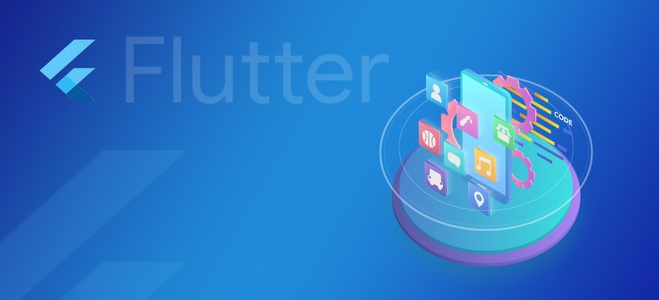Top 4 Reasons behind Flutter Mobile App Development Popularity

Share This Article
Maximizing Mobile App Security with Blockchain Technology
Table of Contents
Subscribe to Our Blog
We're committed to your privacy. SayOne uses the information you provide to us to contact you about our relevant content, products, and services. check out our privacy policy.
Top 4 Reasons behind Flutter Mobile App Development Popularity
Cross-platform app development is full of surprises. Earlier, React Native was the dominant cross-platform technology. Now, there is Flutter, introduced by the tech giant Google.
And whenever there is a new guy in the block, we cannot stop talking about him. So, here we are discussing Flutter again. Without further adieu, let’s jump into the top 4 reasons behind Flutter’s popularity in the application development arena.
Reasons for the Popularity of Flutter Mobile App Development
#1. Technical Features
Flutter is an open source mobile SDK offering native performance for applications. The fun fact is that you can obtain native-performing apps using Flutter without any native UI components. Because Flutter already has its own in-built UI components for execution. The ever-growing Flutter plug-ins and packages make sure that users get the resources they need on time.
Flutter features such as Material Design and Cupertino (iOS-flavor) widgets, rich motion APIs, and others like smooth natural scrolling, platform awareness, etc., emphasize on enhancing user experience on applications. Animations and transitions that run at 60 fps are the key takeaways from Flutter.
Next comes the objects in Flutter. The allocation of objects is done using a single pointer bump that doesn’t require locks. This form of object allocation eliminates any scope of UI jank or stutter.
#2. Developer Experience
Flutter was developed with an intention to make the developer’s life easier. When Eric Seidel introduced Flutter, he wanted a technology that could render pages faster. And the concept could be easily implemented to mobile compared to the desktop.
The absence of a JavaScript bridge has relieved the developers’ from the tiring task of higher levels of abstraction. There is less back and forth conversation between the underlying codes. Comparatively, this has proven to be quite a benefactor for Flutter users.
Another reason is the usage of Dart in Flutter. Dart can be compiled Ahead Of Time (AOT) and Just In Time (JIT) for fast development cycles. This is where the popular ‘hot reloading’ offering of Flutter pops up that has left the developers and technophiles drooling over the technology.
With Dart in use, developers need not have to go with a declarative layout like JSX or HTML. The learning curve of the language is quite simple. Dart makes Flutter fast, powerful, and customized. Flutter Doctor is another feature improving developer experience with system and dependency diagnoses options.
#3. Rapid Development Benefit
The Flutter team took the concept of rapid application development a step ahead. As it's said above, Flutter is simple and easy-to-learn. A single code base can be used for development on both iOS and Android without using any additional JavaScript bridge.
In the development phase, UI development is more time-consuming. As Flutter focusses more on UI, the concept of widgets has become the knight in shining armor. The stateless widgets and layouts in Flutter support both Cupertino and Material design.
Flutter does not use traditional compiling methods. With stateful hot reload, the changes made in the code are instantly reflected in the live application once it is saved. As it increases the productivity of the developers, we can expect faster turnaround times for applications built using Flutter.
#4. Quality Assurance (QA)
Any application, big or small, needs to be perfectly functional. In Flutter apps, the time taken for application testing and quality assurance is significantly reduced due to its single codebase. Neither the developers nor the QA team has to spend extra time and effort testing separate codes on different platforms.
Flutter offers a great application testing system for various levels such as UI, functional, and unit. Features like widget testing in Flutter helps to run UI tester quickly. Flutter has an individual package exclusively for running tests called as the Flutter Driver. To simply it more, Flutter features fast documentation showing how easily a developer can run tests at various levels during SDLC.
Ending Note
“One of the things that has been very engrained in the Flutter Project from the very, very beginning was providing value to users immediately, yesterday, and to talk to our customers.” Eric Seidel, Engineering Manager @Flutter
The Flutter talk doesn’t end here. As Google strives to improve its unique SDK, there is a lot more coming in the future. As you might have already seen, Google recently released Flutter 1.0 with web support as well. Hereafter, we are bound to hear more Flutter app stories than any other cross-platform technology would be known for.
Meanwhile, you can check out more about our Flutter Development Services to sum up your thoughts regarding Flutter development.
Looking for web or mobile app development services? Get in touch for a free consultation! from our Experts.
Share This Article
Subscribe to Our Blog
We're committed to your privacy. SayOne uses the information you provide to us to contact you about our relevant content, products, and services. check out our privacy policy.

